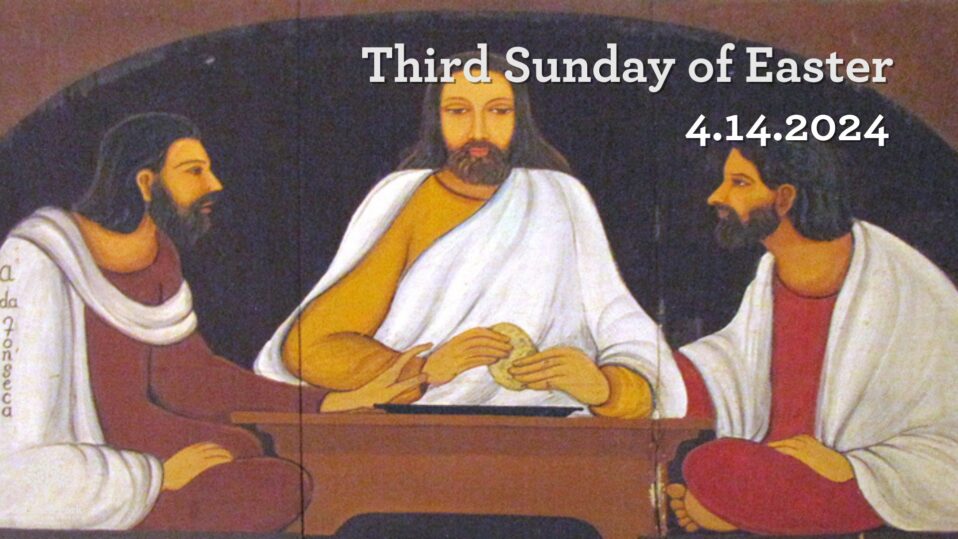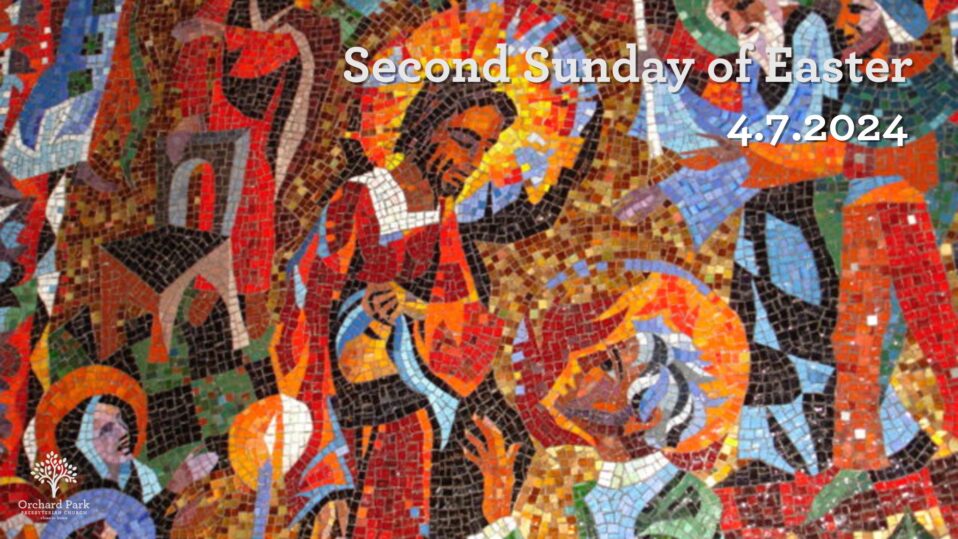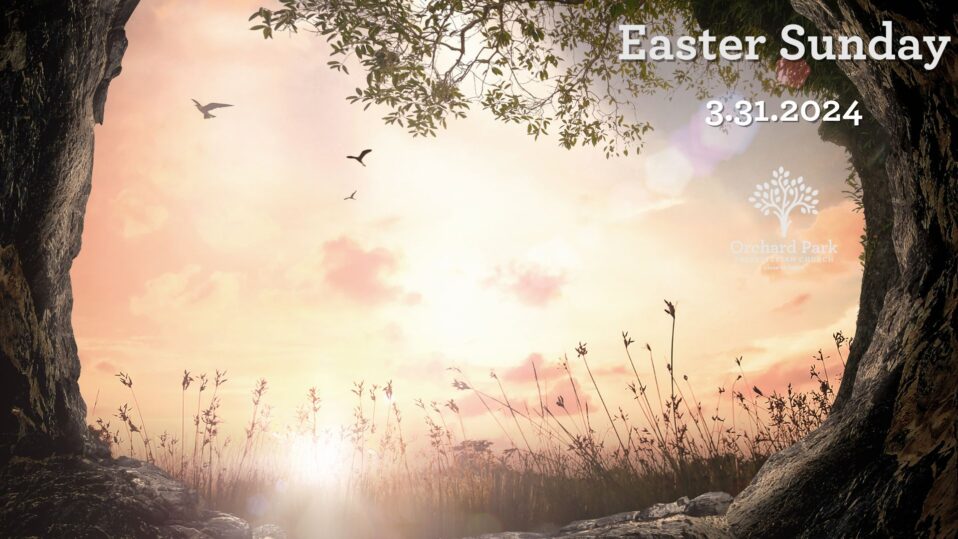Thank God for the disciple, Thomas. Thank God he said what many of us think but are reluctant to say. Thank God he missed the meeting, that he wasn’t in “the room where it happened.” Because if Thomas hadn’t been out of the room, when Jesus came and showed up in front of the disciples, we wouldn’t get to see what happens when you are a follower of Jesus and you have doubts.
I hate that feeling when you have just missed something exciting and everyone else tells you about it – how beautiful it was. Oh, should have been there. But take our word for it, it was beautiful. I have often been the one who just missed the falling star in the night sky, or missed the sighting of the loon before he ducked under the water, or the Eagle before he took off into the sky. It’s a deflating feeling, when everyone else gets to see something miraculous firsthand, and they just relate to you how amazing it was. It’s just not the same as the real thing.
I can only imagine the disappointment and frustration and even the heart ache that Thomas felt when he heard that he missed the moment that the resurrected Jesus appeared before them. Imagine if he said, “wow, that’s great. Good for you. I hope you told him hi for me.”
No. The emotions are much, much stronger than that. He says, “Unless I see the mark of the nails in his hands,” Thomas says, “and put my finger in the mark of the nails and my hand in his side, I will not believe.”
The fact that Thomas is doubting does not mean that he doesn’t have faith. The two aren’t mutually exclusive. You can doubt and still have faith. Indeed doubt is an element of faith.
Anne Lamott comments,
“I have a lot of faith. But I am also afraid a lot, and have no real certainty about anything. I remembered something Father Tom had told me — that the opposite of faith is not doubt, but certainty. Certainty is missing the point entirely. Faith includes noticing the mess, the emptiness and discomfort, and letting it be there until some light returns.”
Frederich Buechner echoes this saying,
“Whether your faith is that there is a God or that there is not a God, if you don’t have any doubts, you are either kidding yourself or asleep. Doubts are the ants in the pants of faith. They keep it awake and moving.
“Faith is better understood as a verb than a noun, as a process than a possession. It is on-again-off-again rather than once-and-for-all. Faith is not being sure where you’re going but going anyway. A journey without maps.”[5]
In his book Faith After Doubt that was published earlier this year, Brian McLaren says, “Doubt need not be the death of faith. It can be, instead, the birth of a new kind of faith, a faith beyond beliefs, a path that expresses itself in love, a deepening and expanding faith that can save your life and save the world.”[6] That isn’t the kind of faith the disciples had on Easter evening, locked behind closed doors. Not yet, anyway.
McClaren names four stages of faith development that we may experience during our life journey: simplicity, complexity, perplexity, and harmony. “Doubt,” he says, “is the passageway from each stage to the next.”[7] In that room on Easter evening, the disciples were somewhere between complexity—coming to terms with mystery—and perplexity—raising doubts and asking questions as they came to terms with their fear, and their deep grief.
It’s interesting what Thomas wants to see. Thomas doesn’t say, unless I see his face and can talk to him I will believe, no what Thomas wants to see are the marks of pain and brutality that were inflicted on Jesus. Thomas needs to see the part of Jesus that is most vulnerable, not the most powerful.
He is looking for existential proof that the one whom God has raised up is the same one who was damaged beyond all human repair. He is looking for evidence that this Messiah knows everything there is to know about the worst kind of breathlessness and will never discount it, neither here nor in the hereafter. Otherwise, what should Thomas believe? That Jesus’ new life in God has nothing to do with his old one? That faith means seeing the wounded world as a passing illusion? Thomas wasn’t having it. He wanted to see the marks on Jesus’ body. He wanted to reach out his real hand and touch Jesus’ real wounds. Only then would he believe that it mattered, that Jesus’ resurrected life meant something for every life, no matter how hurt and scared. Thomas has faith, he’s just moving from complexity to perplexity. He’s moving from getting his head around a tragedy and looking for a miracle.
I think the editors have mistitled this story in the Bible. I don’t think this story is about doubting Thomas.
I think this story is about a living Jesus. This story isn’t about a divine presence that returns without any marks or signs of the past. No this story is about a very real, touchable, living Jesus that enters a closed room rather and shows the scars etched in his skin. To erase those scars would be to discount the meaning of it all.
This story is about how Jesus helps us as move through our faith journey from simplicity, “Jesus loves me this I know for the Bible tells me so.”
To complexity, “Life didn’t turn out as I had expected>”
To perplexity, “Why did that terrible thing happen?”
To harmony, “My peace I give to you. My peace I leave with you. Do not let your hearts be troubled, and do not let them be afraid.”
We don’t get to jump from simplicity to harmony, that would be avoiding the pain and the scars.
Notice on the cover of your bulletin today, is one of the most famous paintings by Caravaggio. The painting is called the incredulity of Thomas. In it, you have Thomas at the center and two other disciples Peter and John, all leaning in toward Jesus. Notice that Jesus has no halo around him, but looks as human as the disciples, yet without any wrinkled fore heads and anxious eyes. Notice that Jesus has his hand on Thomas’ and is leading Thomas’ hand to his wound.
In our faith journeys Jesus leads us, guides us and shows us, so that we may come to believe.
So don’t be afraid to ask. It’s o.k. to ask God for clarity. It’s o.k. to ask God for direction. It’s o.k. to say to God, I need some answers here. It’s o.k. to pray Lord I believe, help my unbelief. Anyone who cares enough to seek, will surely find.
Mark Helprin, in Winter’s Tale, writes “All great discoveries are products as much of doubt as of certainty, and the two in opposition clear the air for marvelous accidents.” Robert Penn Warren wonderfully said “Here, as in life, meaning is, I should say, often more fruitfully found in the question asked than in any answer given.” And then Simone Weil: “One can never wrestle enough with God if one does so out of pure regard for the truth. Christ likes us to prefer truth to him because, before being Christ, he is truth. If one turns aside from him to go toward the truth, one will not go far before falling into his arms.”
Your faith life is a partnership with the living Christ, who will show up how you need him to, and guide you where you need to go, so that eventually, your eyes are open and you exclaim, “my Lord, and my God”
Jesus will meet us and accompany us—even if it is to the far edges of faith that has forgotten how to believe.
It seems like the first story following the resurrection ought to be one of unfailing belief and certainly, after all it just happened. And yet the surprising answer to “What’s next?” on the journey of faith is not a testimony about certainty but one in which expressions of doubt and disbelief are lifted up as a part of the journey of faith, celebrated by the God who meets us where we are, wherever we are, and accompanies us on that journey, beginning to end.
All thanks be to God.
Amen.
Rev. Dr. Shelly Wood



